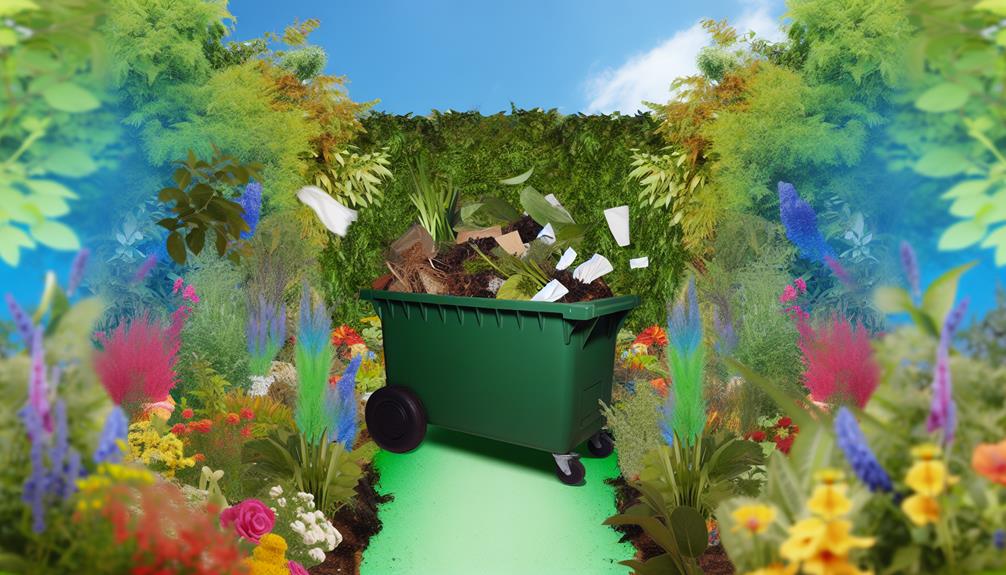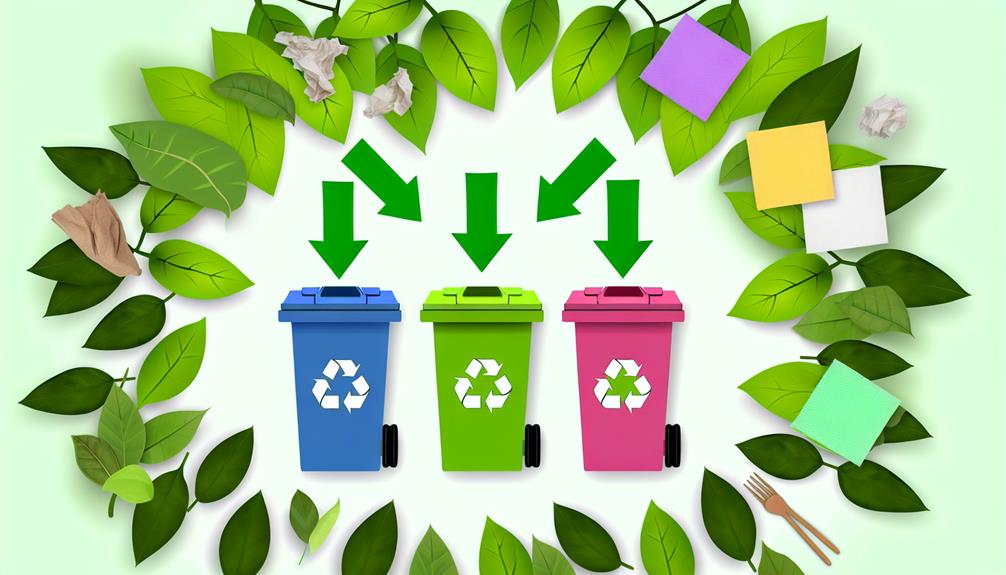

You can compost tissues, but you need to make sure they’re free from chemicals, dyes, and lotions. Opt for tissues cleaned without strong cleaning products. Tear them into smaller pieces to speed up decomposition and mix them with nitrogen-rich materials like food scraps.
Regularly turn the compost to maintain airflow and moisture balance. Composting tissues reduces landfill waste and promotes sustainable waste management. Be cautious with tissues used for cleaning harmful chemicals or those used in medical contexts, as they could introduce pathogens. Interested in mastering the art of composting? There’s more to discover beyond just tissues.
So, what exactly makes a material compostable?
To be considered compostable, a material must break down into natural elements in a compost environment, turning into nutrient-rich soil. This process involves the action of microorganisms such as bacteria and fungi, which decompose the material. For something to be classified as compostable waste, it should be derived from organic materials. These are items that come from or were once part of living organisms, like plants or animals.
When you’re composting at home, you’ll want to make sure that what you add to your compost pile is truly compostable.
Organic materials like fruit peels, coffee grounds, and leaves are excellent examples. These materials decompose relatively quickly and contribute essential nutrients to your compost.
It’s important to distinguish between compostable and biodegradable.
While all compostable items are biodegradable, not all biodegradable items are compostable. Compostable items break down more completely and leave no toxic residue, making them environmentally friendly options for your composting efforts. Pay attention to labels and certifications indicating compostability to avoid adding non-compostable waste to your pile.
Following these guidelines helps create a healthy compost system, benefiting both your garden and the environment.
Also Read: Can You Compost Branches?
Not all tissues are created equal when it comes to composting. Facial tissues and paper towels, for example, may seem similar, but they’ve different characteristics that affect their compostability.
Facial tissues are generally soft and designed to break down easily, making them suitable for composting. However, make sure they’re free from lotions or other additives that could harm your compost pile.
Paper towels, on the other hand, come in various types. Some are plain and free of harmful chemicals, while others may contain dyes or synthetic fibers.
When composting paper towels, it’s important to take into account what they were used for. Paper towels used to clean up food spills or water are generally safe to compost. Avoid composting those used with harsh cleaning chemicals or substances that could introduce toxins into your compost.
Composting tissues offers several environmental benefits but also comes with certain challenges you should take into account. On the plus side, composting tissues reduces landfill waste, which has a positive environmental impact. When you compost, you’re contributing to a more sustainable waste management system. Tissues typically decompose relatively quickly, given their lightweight and thin structure, speeding up the decomposition rate of your compost heap.

However, not all tissues are created equal. Some tissues contain chemicals, dyes, or lotions that mightn’t break down easily, potentially harming your compost. Additionally, tissues used to clean up non-biodegradable substances or those contaminated with pathogens should be avoided, as they can introduce harmful elements into your compost pile. This could affect the quality and safety of the final compost product.
Another factor to take into consideration is the balance of your compost pile. Tissues are high in carbon, so you’ll need to balance them with nitrogen-rich materials like food scraps or grass clippings. If you add too many tissues without balancing the carbon-to-nitrogen ratio, you might slow down the overall decomposition rate.
Also Read: Can You Compost Bones?
To compost tissues properly, start by verifying that the tissues you’re using are free from chemicals, dyes, and lotions. These substances can disrupt the composting process and harm your compost bin’s ecosystem. Once confirmed, tear the tissues into smaller pieces to accelerate decomposition.
Next, balance your compost bin with a mix of green and brown materials. Tissues are considered brown materials, so you’ll need to add green materials like fruit scraps, vegetable peels, or grass clippings to maintain the right carbon-to-nitrogen ratio. This balance is essential for efficient composting.
Make sure to layer the tissues evenly with other compostable materials to promote airflow. Good aeration helps microorganisms break down the matter more effectively. Turning your compost pile regularly, about once a week, will also aid in this process.
Moisture levels are another key factor. Your compost bin should be as damp as a wrung-out sponge. If it’s too dry, add water; if it’s too wet, mix in more brown materials like shredded paper or dried leaves.
Also Read: Can You Compost Body Wash?
Instead of composting tissues, you might consider more eco-friendly alternatives that reduce waste and benefit the environment. One option is upcycling tissues. While not all tissues can be reused, some, particularly those used for non-hygienic purposes like wrapping delicate items or cleaning surfaces, can find a second life. By doing so, you’re not only reducing waste but also getting more use out of a single product, which is a win for both you and the planet.

Another alternative is reusing tissues. For instance, if you have tissues that are lightly used or clean, you can repurpose them for dusting or wiping down counters. This way, you’re reducing the need for additional cleaning products and extending the life of your tissues.
You could also switch to using reusable cloth tissues or handkerchiefs. These can be washed and reused multiple times, significantly cutting down on disposable tissue waste.
You’re right to ask about health risks. Composting used tissues can lead to pathogen transmission and bacterial growth. It’s important to make sure your composting methods are safe to protect your community’s health and well-being.
You’ll be pleased to know that composting facilities can handle tissues thanks to their industrial processes. Just check your local municipal guidelines to make sure you’re following the correct protocols, and you’ll be contributing to a greener community.
In a compost pile, tissues’ decomposition rate varies, but they usually start breaking down within a few weeks. You’ll feel a sense of accomplishment as you see them integrate into your eco-friendly efforts.
You’re concerned about pests in your compost. Don’t worry, with proper pest control and compost hygiene, tissues won’t attract rodents or pests. Just make sure you maintain a balanced compost pile and regularly turn it.
You can compost tissues in a home composting setup, but be mindful of the tissue brands you use. Some may contain chemicals. Always make sure your compost bin stays balanced and doesn’t attract pests or rodents.
So, you can compost tissues, but you need to be mindful of the type. Stick to plain, unscented, and dye-free tissues to avoid introducing harmful chemicals into your compost.
Shred them for faster decomposition and mix them with green materials to balance the compost. If you’re unsure, consider alternative disposal methods like recycling or reusing.
By following these guidelines, you’ll guarantee your compost remains healthy and effective.
